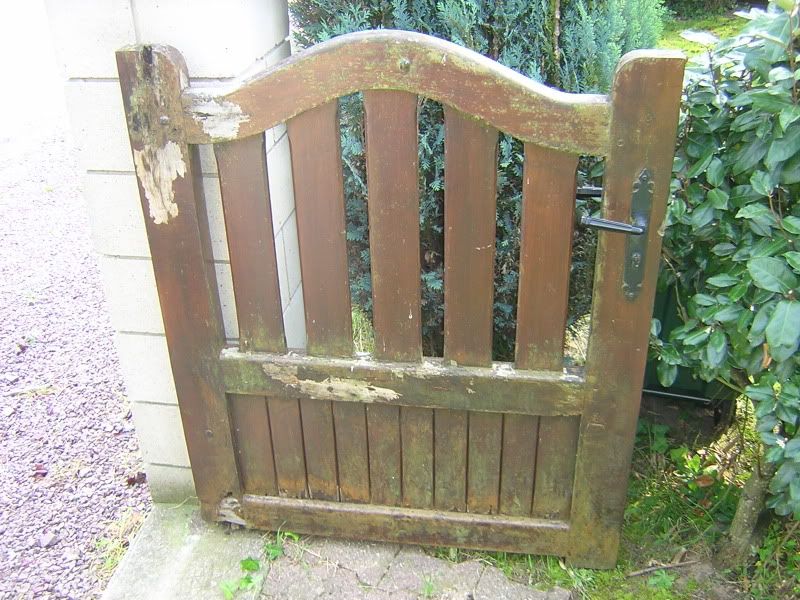dedee
Established Member
I would like to make some replacement gates and I would like to change the design in order to reduce the likelihood of rot as seen here.

Why are gates typically made with the end grain of the vertical stiles open to the elements? Is it structural or aesthetic? My design (in my head only at this stage) will have the tenon in the stiles and the rails going all the way to the edge of the gate. Do the tenons need to be pegged as in the photo? On our driveway gates the pegs have been another source of rot. I was thinking epoxy glues would provide a longtime, secure joint without pegs.
As for the panels. I am thinking of doing something similar to the original, open at the top closed below but instead of fixing the vertical boards into either mortises (top half of gate) or a channel (lower half) I would just nail or screw them into a chamfered rebate which would prevent water collecting. Are there any drawbacks with this idea?
As for the timber I am hoping to use reasonably locally sourced chestnut.
I hope I have used the correct terminology please correct me if not.
If I get it right with this small gate the next job will be replacing the two large driveway gates.
Cheers
Andy

Why are gates typically made with the end grain of the vertical stiles open to the elements? Is it structural or aesthetic? My design (in my head only at this stage) will have the tenon in the stiles and the rails going all the way to the edge of the gate. Do the tenons need to be pegged as in the photo? On our driveway gates the pegs have been another source of rot. I was thinking epoxy glues would provide a longtime, secure joint without pegs.
As for the panels. I am thinking of doing something similar to the original, open at the top closed below but instead of fixing the vertical boards into either mortises (top half of gate) or a channel (lower half) I would just nail or screw them into a chamfered rebate which would prevent water collecting. Are there any drawbacks with this idea?
As for the timber I am hoping to use reasonably locally sourced chestnut.
I hope I have used the correct terminology please correct me if not.
If I get it right with this small gate the next job will be replacing the two large driveway gates.
Cheers
Andy




